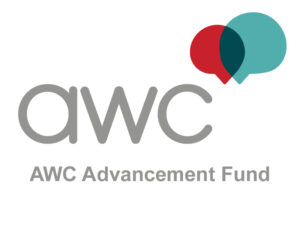
After spending the majority of my career with for-profit companies, switching to nonprofit organizations was a surprisingly rewarding experience in multiple ways.
Sure, there can be a significant difference in compensation, but the gap is closing as nonprofits recognize the critical need to employ highly skilled professionals to support and grow their mission. At least that has been my experience.
My for-profit skills in communications, marketing, advertising, strategic planning, and customer relations for both b-to-b and b-to-c were much sought-after in the nonprofit world. While for-profit companies focus on revenue by selling products or services, nonprofits focus on revenue to meet the expenses of their mission and remain viable. Thus, whether for-profit or nonprofit, similar skills are required of the staff.
As an example, nonprofits must address a diverse audience, which can include volunteers, donors, sponsors, and the community or general public, including those requiring their services. Due to this broad audience, nonprofits are tuning in to the need for audience segmentation and donor relationship management to better understand the interests of their audiences. Robust databases and datamining capabilities are increasingly necessary.
One noteworthy difference between for-profit and nonprofit organizations is the work environment. Nonprofits’ emphasis on altruistically serving others provides a strong contrast to the for-profit world that places importance on customer relations leading to revenue. Of course, there are parallels, but measurements for the former can be both quantifiable and anecdotal, while the latter is typically more bottom-line oriented. In addition to the numbers, it is the nonprofit’s anecdotal stories that provide both a personal and organization-wide sense of accomplishment for the greater good – i.e. student scholarships, food for hungry families, rescued pets, shelter for the homeless, services for abused women, medical services for the poor, and many other examples.
I found that the individuals I worked with – coworkers, donors, and volunteers – were first and foremost passionate about the mission, eager to make a difference, and pleasant to work with. They tend to have a strong sense of work-life balance that honors employees who focus on family and/or other outside interests. I must admit that the nonprofit world does have its share of issues, not only with employees, but also with committees and boards. It is not utopia. The difference is that these issues typically are handled with more compassion and humanity than the rigid constraints often experienced in the for-profit world.
There also are many collaborative opportunities with colleagues from other nonprofits – sharing ideas, successes, best practices, and lessons learned. Training opportunities also are plentiful, both no cost and fee based. Certifications and degrees in nonprofit management are growing in popularity and desirability. In general, nonprofit professionals are eager to continually learn and seek better ways. Of course, there are exceptions. Some nonprofits stagnate, usually as a result of poor executive leadership or an over-reaching board of directors. I have noticed however that this stagnation, while sometimes long-term, is temporary, otherwise the nonprofit cannot thrive.
So whether you enter the nonprofit world as your first career or your second career, the skills and experience you bring with you will serve you well. One point of entry into the nonprofit world that is particularly beneficial in terms of learning as well as shining, is that of an internship. College students find this an interesting and rewarding option. Women (and men) who have taken time off to be caregivers to elderly parents or young children, often find re-entry to the paid workforce with a nonprofit. AWC professionals definitely have the skills that nonprofits need, from public relations professionals, to social media communicators, to event specialists, to writers, etc. For-profit professionals count their successes through revenue, products launched, and brand recognition. So do nonprofit professionals with a slight twist on terminology – funds raised, services provided, and brand perception.
As nonprofit and for-profit career opportunities require more and more of the same skills, and hopefully, begin to offer comparable compensation, the choice becomes an issue of following one’s passion. Personally, I highly recommend exploring the nonprofit world for the many rewarding benefits it offers.
About the Author
 Sharon Current began her AWC membership as a student at Trinity University. She served as president of three different chapters, which helped hone her management skills. Sharon’s career includes McCann Erickson, Houston Chronicle, The Seattle Times Company, Billings Middle School, St. Anne School Foundation, and Christian Community Service Center. She describes herself as a brand marketer who enjoys building constituent relationships. Recently retired, Sharon continues to serve nonprofits such as Lord of the Streets that provides services for the homeless.
Sharon Current began her AWC membership as a student at Trinity University. She served as president of three different chapters, which helped hone her management skills. Sharon’s career includes McCann Erickson, Houston Chronicle, The Seattle Times Company, Billings Middle School, St. Anne School Foundation, and Christian Community Service Center. She describes herself as a brand marketer who enjoys building constituent relationships. Recently retired, Sharon continues to serve nonprofits such as Lord of the Streets that provides services for the homeless.

